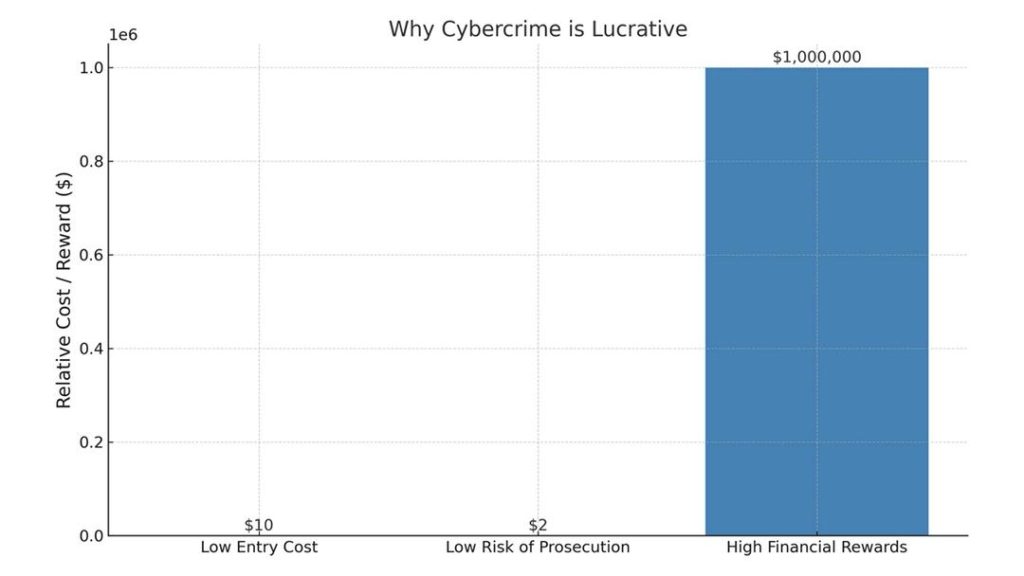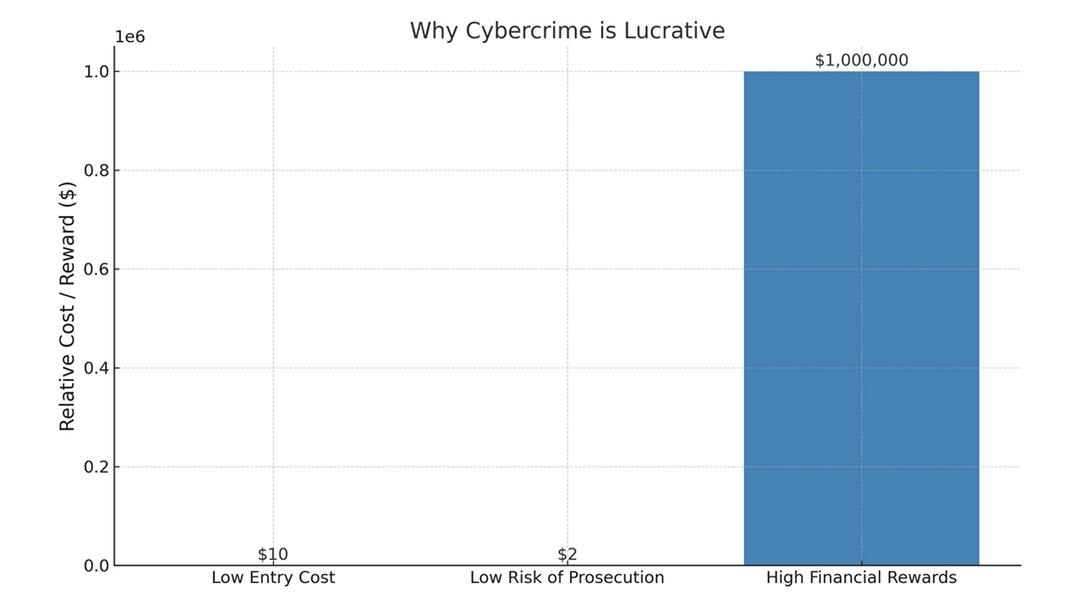Today, more than 5 billion people,over 63% of the global population, are online. As our reliance on digital infrastructure deepens, cybercrime has exploded into one of the most profitable and low-risk ventures for criminals globally.
If you lead a business, work in IT, or care about the security of your organization, here’s what you need to knowand what you can do.
Why Cybercrime Is So Attractive to Criminals
1. Low Entry Barrier
You no longer need elite skills to become a cybercriminal. Basic malware kits and phishing tools can be purchased on the dark web for as little as $10. Even sophisticated ransomware kits often cost only a few hundred dollars. This ease of access has opened the door to a flood of low-level but highly destructive attackers.
2. Low Risk of Prosecution
Cybercriminals operate across borders. Someone in Country A can target victims in Country B while laundering money through Country C. This international complexity makes legal enforcement extremely difficult, often allowing criminals to act with near impunity.
3. High Rewards
Ransomware attacks can yield millions of dollars in cryptocurrency, often in an untraceable form. High-profile incidents, such as WannaCry and NotPetya, paralyzed healthcare systems and major corporations. The public leak of powerful tools like the NSA’s EternalBlue exploit only escalated the threat landscape.
Bottom line? It’s cheap to start, hard to catch, and highly profitable.
How Organizations Can Mitigate Cybersecurity Risks
Cyber threats won’t disappear overnight, but their impact can be reduced with a multi-layered, strategic approach.
1. Prioritize Cybersecurity at the Top
Cybersecurity isn’t just an IT problem; it’s a business issue. Boards and executives must conduct regular security reviews and ensure that adequate resources are allocated. Investors should also consider cybersecurity maturity during due diligence.
2. Build a Dedicated Cybersecurity Team
A strong internal team should focus on the three pillars of cyber-resilience:
- Technology: Deploy firewalls, endpoint protection, encryption, and real-time monitoring.
- Processes: Enforce access controls, data handling policies, and incident response protocols to ensure security and compliance.
- People: Provide frequent, scenario-based training on phishing, social engineering, and other common threats.
According to the GetBundi Education Technology team’s research, 95% of security breaches are attributed to human error. Investing in your people is as essential as investing in your tech.
3. Collaborate and Share Intelligence
Cybercriminals share tools and tactics freely. To stay ahead, companies must collaborate across industries, share threat intelligence, and work closely with law enforcement. Collective defence is often more effective than going it alone.
Final Thought
The digital era has changed everythingfrom how we work to how we’re attacked. Cybercrime is here to stay, but with the right mindset and strategy, we can dramatically reduce its impact.
Cybersecurity is no longer optional. It’s a business imperative.
If you’re working on building a cyber-resilient organization or exploring cybersecurity best practices, let’s connect. I’d love to exchange insights and experiences.
#Cybersecurity #DigitalTransformation #RiskManagement #Leadership #CISO #InfoSec #CyberResilience #BoardGovernance



